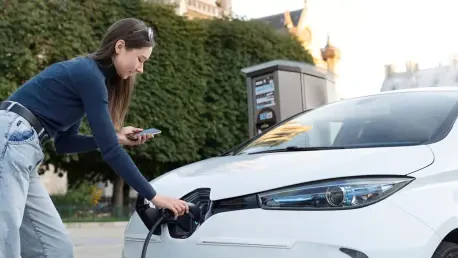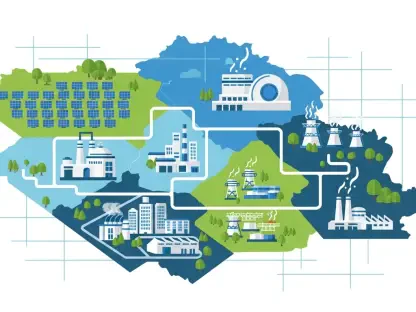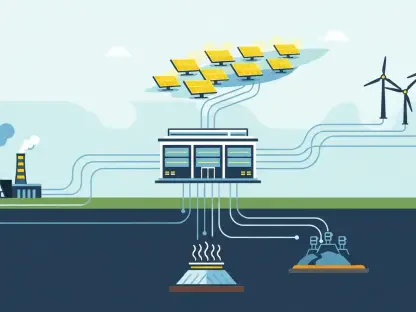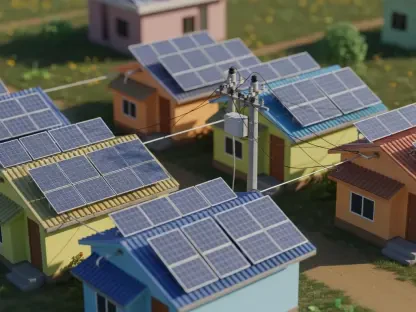What happens when a technology once hailed as the bridge to a sustainable future starts losing ground in the world’s largest auto market? In China, hybrid vehicles—once seen as a practical step toward greener driving—are experiencing a surprising downturn in demand, raising critical questions about consumer behavior, technological advancements, and the direction of the automotive industry in a nation that often sets global trends. Dive into the forces behind this unexpected pivot and what it means for the road ahead.
A Startling Turn in a Giant Market
China’s auto market, a powerhouse of innovation and scale, has long been a testing ground for new vehicle technologies. Yet, recent figures reveal a striking anomaly: hybrid car sales dropped by 3.6% in July of the current year, even as overall car sales grew by 6.9% year-on-year to 1.85 million units. This decline stands in sharp contrast to the robust 12% growth in new energy vehicles (NEVs), particularly pure electric vehicles (EVs), signaling a profound shift in buyer preferences. The numbers paint a picture of a market at a crossroads, where hybrids are struggling to maintain relevance.
This downturn isn’t just a statistical blip; it reflects deeper changes in how Chinese consumers view transportation solutions. With hybrids once positioned as a compromise between traditional gasoline cars and full electrification, their fading appeal suggests that buyers are ready to leap directly into the EV era. This trend challenges manufacturers who have heavily invested in hybrid technology, forcing a reevaluation of strategies in a fiercely competitive landscape.
Why This Trend Resonates Globally
The significance of China’s auto market extends far beyond its borders. As the largest automotive market by volume, its movements ripple through global supply chains, influence environmental policies, and shape manufacturer priorities worldwide. A slowdown in hybrid demand, coupled with slower overall sales growth compared to previous months, hints at broader implications for sustainability goals and the pace of the global shift to electrification.
Moreover, China’s evolving market dynamics offer a preview of potential trends elsewhere. If hybrids lose traction here, other regions may follow suit, especially as EV infrastructure improves globally. For stakeholders in the automotive sector, from policymakers to investors, understanding these shifts is essential to anticipate challenges and seize opportunities in a rapidly changing industry.
Diving into the Causes of Declining Hybrid Demand
Several interwoven factors contribute to the waning interest in hybrid vehicles among Chinese buyers. Technological advancements in pure EVs, such as improved battery life and an expanding network of charging stations, have significantly reduced range anxiety—a key barrier to EV adoption in the past. As a result, consumers are increasingly opting for pure EVs over hybrids, as evidenced by the record-breaking sales of EV-focused companies like Leapmotor and Xpeng.
Market competition and regulatory pressures add another layer of complexity. Beijing’s crackdown on aggressive price wars, aimed at curbing overcapacity and ensuring sustainable profitability, has hit hybrid manufacturers particularly hard. For instance, BYD, a major player in both hybrids and EVs, saw its domestic sales decline by 12% year-on-year, with its NEV market share shrinking from 35.4% to 27.8%. Meanwhile, Li Auto, known for extended-range hybrids, reported a staggering 40% sales drop, underscoring the intense pressure on hybrid-centric business models.
External factors also play a role, with export markets providing a lifeline for some. Car exports surged by 25% in July, offering a buffer for manufacturers like BYD, whose overseas shipments now account for over 20% of total sales. This disparity between domestic weakness and international strength highlights how global demand may reshape strategies for companies facing challenges at home.
Industry Perspectives on a Changing Landscape
Insights from industry voices shed light on the nuances of this transition. A representative from the China Passenger Car Association noted, “The leap in EV infrastructure has transformed buyer confidence, often sidelining hybrids as a less compelling option.” This observation aligns with on-the-ground sentiments, as a Shanghai-based BYD dealer remarked, “Most customers now inquire about pure EVs first—hybrids are often seen as a middle ground that no longer fits their needs.”
Government priorities further complicate the picture. An industry ministry official emphasized, “Stabilizing growth in the auto sector is critical, and excessive competition must give way to long-term viability.” This stance reflects a broader push to balance innovation with economic stability, a challenge that hybrid manufacturers must navigate as they adapt to a market increasingly favoring pure electrification.
These perspectives collectively illustrate a market in flux, where technological progress, consumer sentiment, and regulatory oversight converge. The voices from various corners of the industry highlight a shared recognition: the hybrid’s role as a transitional technology may be diminishing faster than anticipated.
Adapting to a New Reality in China’s Auto Sector
For manufacturers, policymakers, and consumers, responding to the decline in hybrid demand requires strategic adjustments. Manufacturers are urged to accelerate their pivot to pure EV production, focusing on advancements in battery technology and charging solutions. BYD’s success in expanding overseas markets serves as a model—diversifying geographically can offset domestic losses and build resilience against local market shifts.
Policymakers face the task of fostering a balanced transition. While incentives for EV adoption remain crucial, support for hybrid manufacturers during this period of change could prevent abrupt disruptions in the industry. Crafting policies that encourage innovation without sacrificing stability will be key to maintaining China’s position as a leader in automotive progress.
Consumers, meanwhile, must weigh their options carefully. Pure EVs often promise lower operating costs and better infrastructure support in urban areas, but hybrids may still hold value for those in regions with limited charging access. Staying informed about evolving policies, such as potential subsidies for EVs, can help buyers make decisions aligned with both personal needs and broader market trends.
Reflecting on a Pivotal Moment
Looking back, the decline in hybrid car demand in China marked a turning point for the automotive industry. It revealed how swiftly consumer preferences could shift, driven by technological breakthroughs and supported by infrastructure growth. Companies like BYD and Li Auto faced significant hurdles, yet the resilience shown through export growth offered a glimpse of hope amid domestic challenges.
The path forward demanded innovation and adaptability. Manufacturers had to rethink their focus, prioritizing pure EV technologies while exploring global opportunities. Policymakers needed to strike a delicate balance, ensuring that the rush toward electrification did not leave segments of the industry behind. For consumers, the evolving landscape underscored the importance of informed choices, aligning purchases with both practical needs and environmental goals. This moment in China’s auto market history served as a reminder that progress, though challenging, often paved the way for transformative change.









